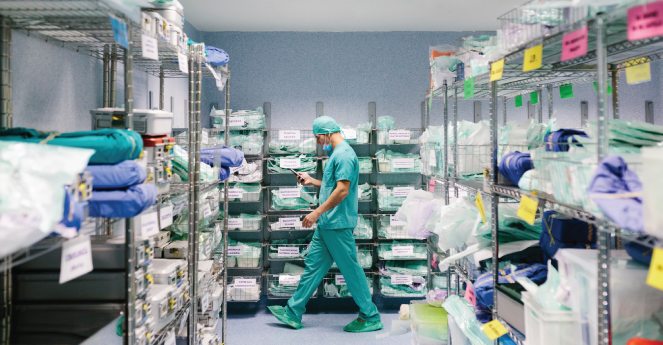While the COVID-19 pandemic accelerated the shift of more procedures to ambulatory surgery centers (ASCs), the primary driver for years has been cost savings. Medicare pays hospital outpatient departments double the rates paid to ASCs (ASCA, 2020). It should not be surprising then that from 2011-2018, Medicare saved over $28 billion on procedures performed in ASCs (ASCA, 2020). “Ambulatory surgery centers, by their design, are built to run more efficiently than acute care facilities and at a lower cost,” explained Joe Pleshek, CEO of Terso Solutions. “The reason for their existence is to offer a more efficient way to distribute health care for routine procedures.”
Because of reduced reimbursement, ASCs are driven to find efficiencies wherever possible. However, this can be challenging in an industry like healthcare where inefficiencies abound. “The challenge that ASCs have is the healthcare supply chain for supplies and products is still largely built around supplying truckloads of valuable supplies to large acute care hospitals,” Pleshek described. “That model has been slow to change and ASCs need to be more efficient because their reimbursements are lower. ASCs have been challenged by not finding an efficient supply chain model to get products in their facilities.”
Despite this challenge, there is hope on the horizon. As new technologies coupled with approaches adapted for the ASC market successfully create cost savings, some key best practices emerge:
Best Practice #1: Move toward real-time fulfillment rather than overstocking. Acute care facilities tend to rely on overstocking equipment and supplies to avoid running out. However, ASCs are frequently working with less space, and overstocking items becomes both costly and impractical. “ASCs are typically located in smaller buildings,” Pleshek clarified. “They don’t have a lot of space for inventory or storage, so they need to make as much use of the square footage as possible to turn a profit. Key to becoming more efficient is to approach inventory in real-time, more like the Amazon model. One click and the product that you need arrives.”

Best Practice #2: Look for vendors and suppliers catering to the ASC market. Several medical technology companies are building divisions for engaging ASCs. “ASCs should be looking for vendors and suppliers that are coming to them with new and innovative delivery models,” Pleshek stated. “ASCs need to continue to put pressure on vendors and look for innovation.”
It is not just large medical device companies recognizing the value of the ASC market. Smaller companies are also looking at their strategy and approach to ASCs differently. “We have a customer who’s just starting out as a small med device company,” Pleshek recounted. “Their whole ethos as a company is to develop a product and service offering designed for an ASC customer. Using RAIN RFID enabled inventory management from Terso, this company can provide the ASC with the right product at the right place at the right time.”
Best Practice #3: Find the right technology partner. There are software solutions in the market designed to facilitate communication between vendors, medical device companies, and ASCs. However, to fully take advantage of these solutions in ways that make sense for the ASC business model requires having the right technology partner in place. “We have experience working across the supply chain – we’ve worked with manufacturers, device companies, distributors, acute care hospitals, and we’ve also begun working with ASCs directly,” Pleshek explained. “We have a unique perspective on the different needs of the various stakeholders.”
Finding a technology partner with experience bringing together an end-to-end, efficient supply chain process allows ASCs to immediately benefit from that knowledge. “We’ve done this repeatedly, which helps to reduce the risk, shorten implementation times, and lower the cost of getting started. Those are all things we bring to the table to make an efficient ASC possible,” Pleshek concluded.
ASCs must find cost-effective ways to operate wherever possible in order to grow margin. By adopting these best practices, ASCs have the opportunity to become even more efficient and grow their business.








